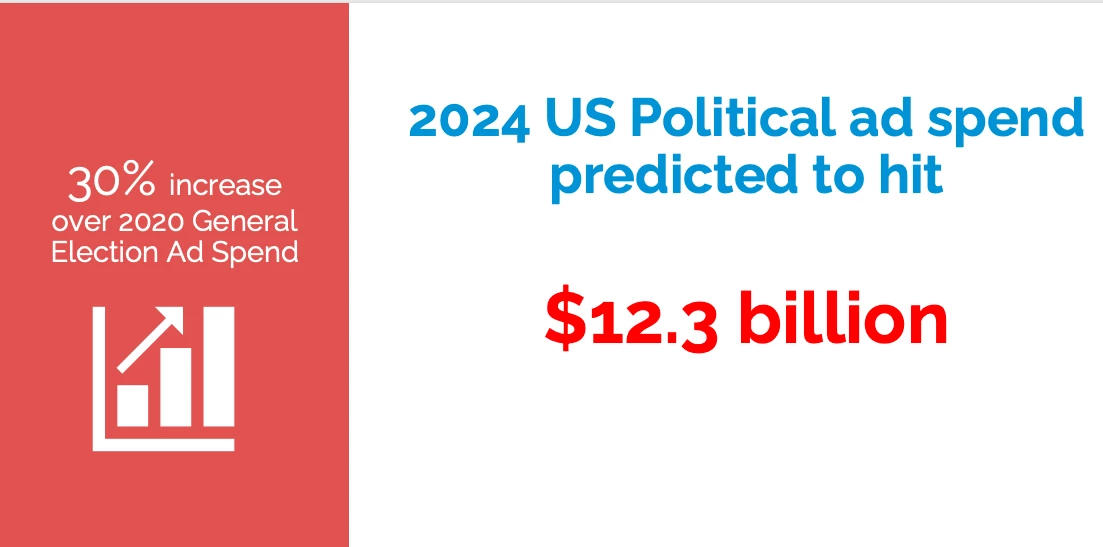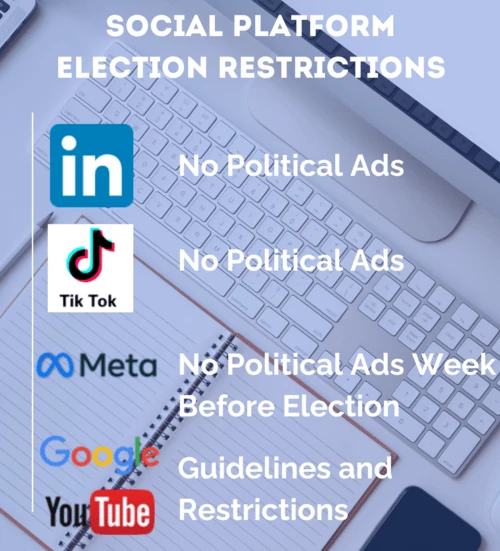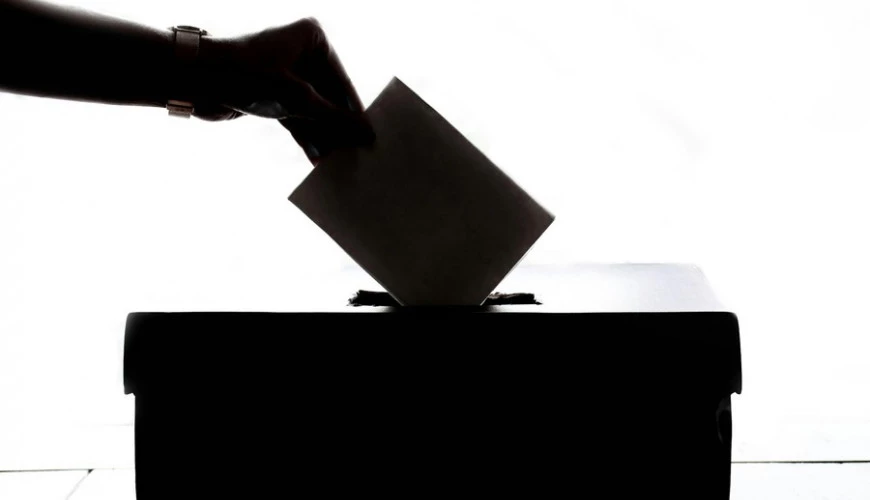Need to Review Your Media Plans?
If you didn't build your 2024 annual or quarterly ad plans with the General election year in mind, you should take a second look at your media plans.
Since Dwight D. Eisenhower ran the first television ads with his 1952 Eisenhower Answers America, Presidential campaign years have never been the same.
2024 is set to be an unprecedented year for political ad spending. Political advertising started earlier than ever—with an ad buy of $25 million from President Biden's campaign in late 2023. Ad spending for this year's general election is predicted to increase by 30% over 2020, up to $12.3B. Digital advertising alone may increase 156% from 2020 to 2024, according to EMarketer.

AdImpact/Axios research shares that seven states will make up 76% of expected Presidential campaign general spending. Arizona, Pennsylvania, North Carolina, Michigan, Wisconsin, Georgia, and Nevada. The spending for each of these states will range from $362m to $821m.
Because of this ad competition, a targeted, strategic media plan, ideally using first-party data to optimize results, will be essential. Brands will need to have an in-depth knowledge and understanding of their audience. Where do they spend time? How do they feel about political messaging? What do they value? Bring your consumer empathy to all your potential interactions with your customers. You'll need to be careful with when and where your ads run.
Ad Saturation
For your 2024 media plan, consider ad saturation, audience attention, ad cost increases, messaging, and the consequences of placement. Be proactive rather than reactive, plan ahead, and be ready to pivot.
Political ad saturation is an issue every four years, even more so with our current political state of affairs and candidates with bottomless pockets. Think of 2024's election cycle as Amazon Prime Day, Black Friday, and Back to School at one time.
Consumers will be overloaded with news and ads whenever they visit a website or turn on the TV. With so much coming their way, ad overload may significantly reduce consumers' usual 8 seconds of attention span.
Ad Placement
Now is the time to have command over your ad placement. Most political advertising will be on television platforms – broadcast, cable, and CTV, followed by digital and audio. Do you have a diversified media plan, or are you ready to move quickly from one platform to another?
Is your audience likely to participate in social media or news blackouts during the height of election campaigning? If so, what traditional ad channels or different digital platforms will still reach them?
Be sure to have your inclusion site list and/or review your exclusion list if that is your strategy. That should help manage the possibility of your ads landing on an MFA site or site with content you wouldn't want your brand to be associated with. Be aware of the increased risk of misinformation, bots, and ad fraud. Know what platforms and channels allow political ads and which do not.

The Cost of Advertising During Elections
Marketers should expect higher ad costs during this time. A recent Forrester report estimated a 13% increase in ad costs. Due to limited supply and higher demand, there will be higher CPMs due to limited supply and higher demand, which will cause a scarcity of space. Monitor your CPMs and CPCs closely and have a flexible budget to adjust.
Deep principle-based issues are also up for debate between the candidates, creating the need to scrutinize your creative and messaging. Consider whether you continue with your current ads, opt for a specific message to connect with your customers, or give them the joy and humor they may need.
Be cautious, as sensitivity will be high. Creative and messages can be easily misconstrued. Invest time in social listening and content trend tools. Closely monitor your audiences' social comments and consumer sentiment to track how they respond to your ad platforms and if they are unhappy with your messaging.
If you work with affiliates, influencers, and creators, know who they are and have spelled out what your brand will allow from them and what you won't regarding their public messages. You don't want to have any surprises from a creator partner going viral in a negative way.
This information is a lot to unpack as you wade through the upcoming months and work to successfully continue to reach your pre-determined marketing goals with the added disruption. Don't forget it's also an Olympic year, with the Summer Olympics in Paris from July 26 – August 11.
Now is the time to rely heavily on your media buying partner and creative team. Let their expertise and recommendations guide you through the 2024 advertising hurdles.
Hero image source: pexels-element5-1550337



